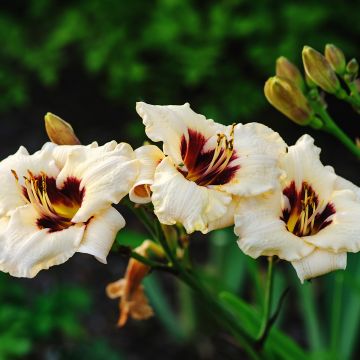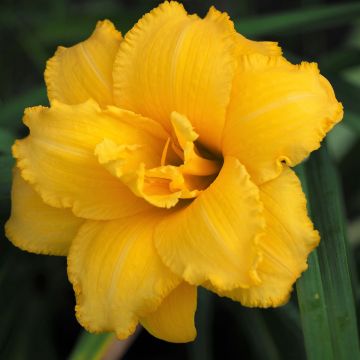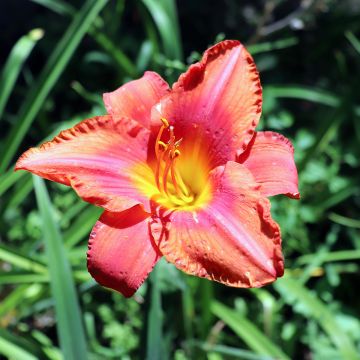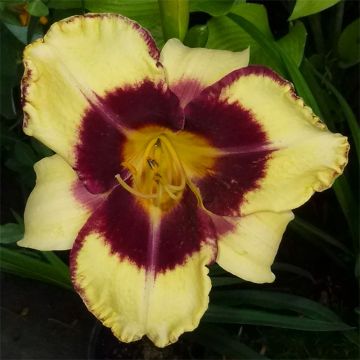Shipping country and language
Your country of residence may be:
Your country of residence is:
For a better user experience on our website, you can select:
Your shipping country:
-
Andorra
-
Austria
-
Belgium
-
Bulgaria
-
Canada
-
Chile
-
Croatia
-
Cyprus
-
Czechia
-
Denmark
-
Estonia
-
Finland
-
France
-
Germany
-
Greece
-
Hungary
-
Iceland
-
Ireland
-
Italy
-
Latvia
-
Lithuania
-
Luxembourg
-
Malta
-
Monaco
-
Netherlands
-
Poland
-
Portugal
-
Romania
-
Slovakia
-
Slovenia
-
Spain
-
Sweden
-
Switzerland
-
United Kingdom
We only deliver seed and bulb products to your country. If you add other products to your basket, they cannot be shipped.
Language:
-
French
-
German
-
Spanish
-
English
-
Italian
My Account
Hello
My wish lists
Log in / Register
Existing customer?
New customer?
Create an account to track your orders, access our customer service and, if you wish, make the most of our upcoming offers.
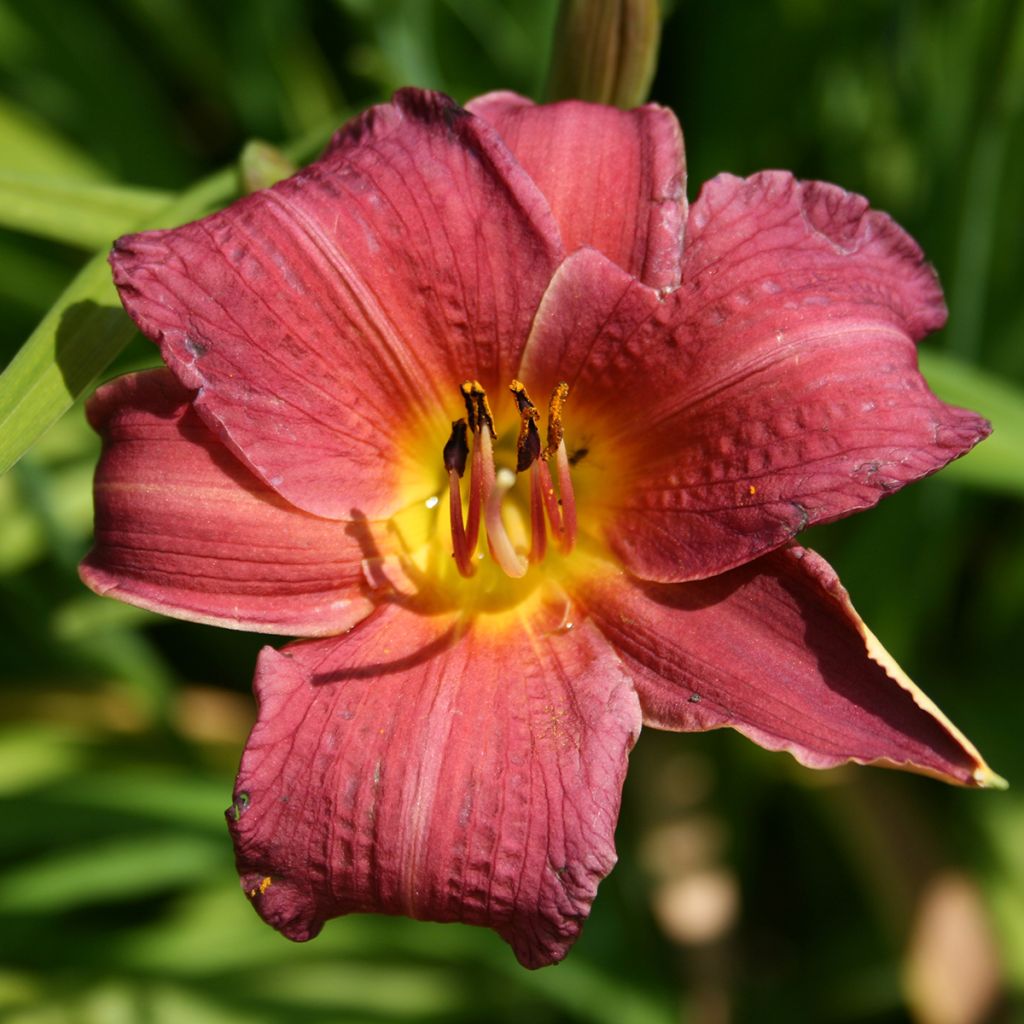

Hemerocallis Red Rum - Daylily


Hemerocallis Red Rum - Daylily


Hemerocallis Red Rum - Daylily
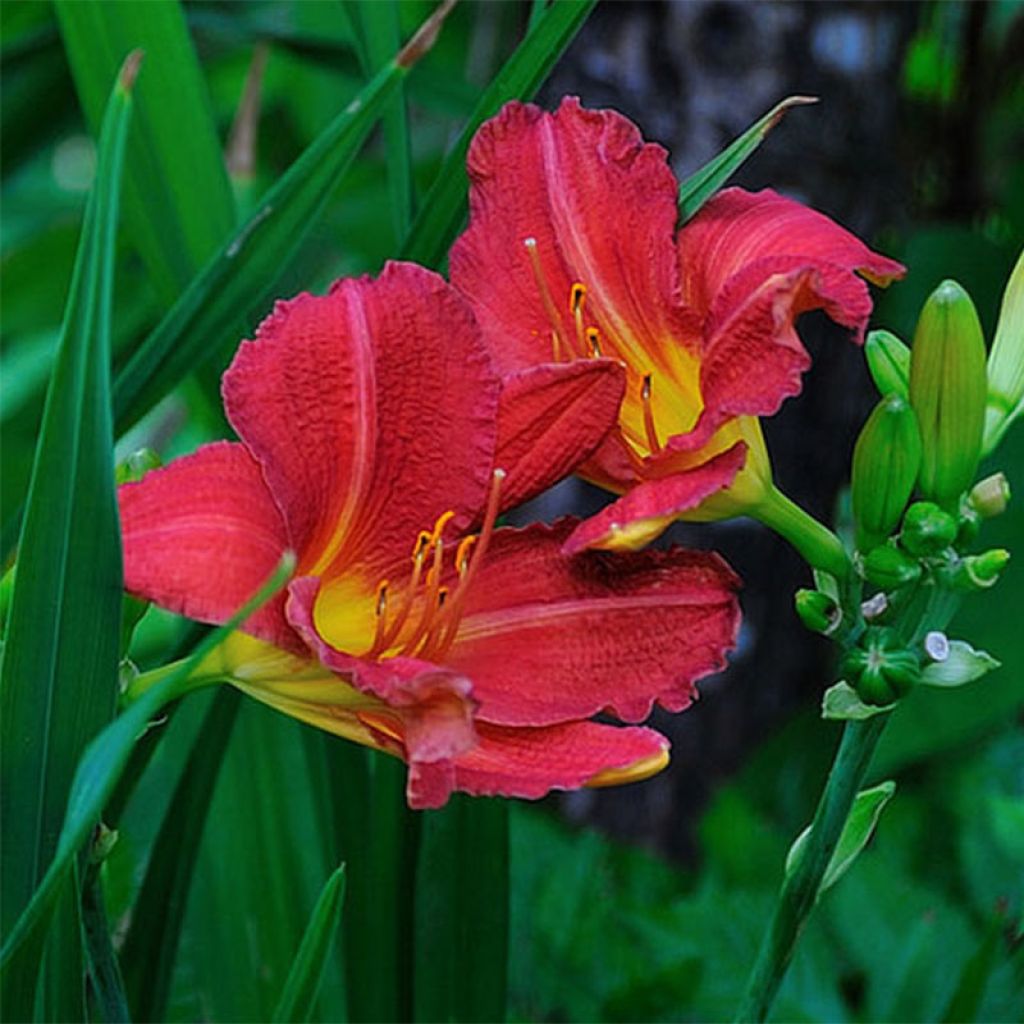

Hemerocallis Red Rum - Daylily
Hemerocallis Red Rum - Daylily
Hemerocallis Red Rum
Daylily
Perfect, just like my entire order. Thank you.
Colette, 16/02/2023
Order in the next for dispatch today!
Dispatch by letter from €3.90.
Delivery charge from €5.90 Oversize package delivery charge from €6.90.
More information
This item is not available in your country.
Schedule delivery date,
and select date in basket
This plant carries a 12 months recovery warranty
More information
We guarantee the quality of our plants for a full growing cycle, and will replace at our expense any plant that fails to recover under normal climatic and planting conditions.
From €5.90 for pickup delivery and €6.90 for home delivery
Express home delivery from €8.90.
From €5.90 for pickup delivery and €6.90 for home delivery
Express home delivery from €8.90.

Does this plant fit my garden?
Set up your Plantfit profile →
Description
Hemerocallis 'Red Rum' is a low variety, offering a profusion of light cherry red flowers highlighted by a very fine lighter midline. It bears semi-evergreen foliage, on which hundreds of medium-sized flowers bloom in the middle of the season. Very floriferous and robust, this old variety has proven itself. It is a trouble-free perennial, awarded several times, whose success is guaranteed!
The genus Hemerocallis belongs to the Asphodelaceae family. These are perennial and hardy plants with deciduous, sometimes semi-evergreen foliage. The variety 'Red Rum', introduced in 1974, grows in a fairly dense clump that will reach 40cm (16in) in height with a similar spread. Hemerocallis tends to spread a little when they like the soil. The flowers measure about 8cm (3in) in diameter, and the petals in this variety are thick, wide, and wavy, especially along the edges. The small yellow throat extends into a delicate, faded red line in the centre of each petal. Each flower lasts only one day, but the flowering renews continuously over a beautiful period between June and July, with a plant producing 400 to 500 flowers in a season from the age of 3 years. In this variety, the linear foliage is semi-evergreen. Hemerocallis are plants with short rhizomes and fleshy roots that tolerate dry soils but are more lush and floriferous in moist soil.
Very easy to grow, these plants thrive in both shade and sun. Some of them can be slightly invasive, so don't hesitate to divide the clumps every four or five years, preferably in autumn, after flowering. Hemerocallis is often called "the perfect perennial plant", because of its vibrant colours and its ability to tolerate any type of environment. It is also known for its lack of modesty, as it is beautifully exuberant and blends well with other perennials. Plant them in generous clumps at the back of your borders. All summer bulb flowers can be planted alongside it. 'Red Rum' will fit perfectly into a red garden, along with Achillea 'Pomegranate' or an oriental lily like Lilium 'Red Twin'. If growing in pots for the patio or balcony, ensure they have a depth at least 30cm (12in). Dwarf varieties are preferred for container cultivation. The flowers are edible: they brighten up salads and decorate desserts.
Report an error about the product description
Hemerocallis Red Rum - Daylily in pictures


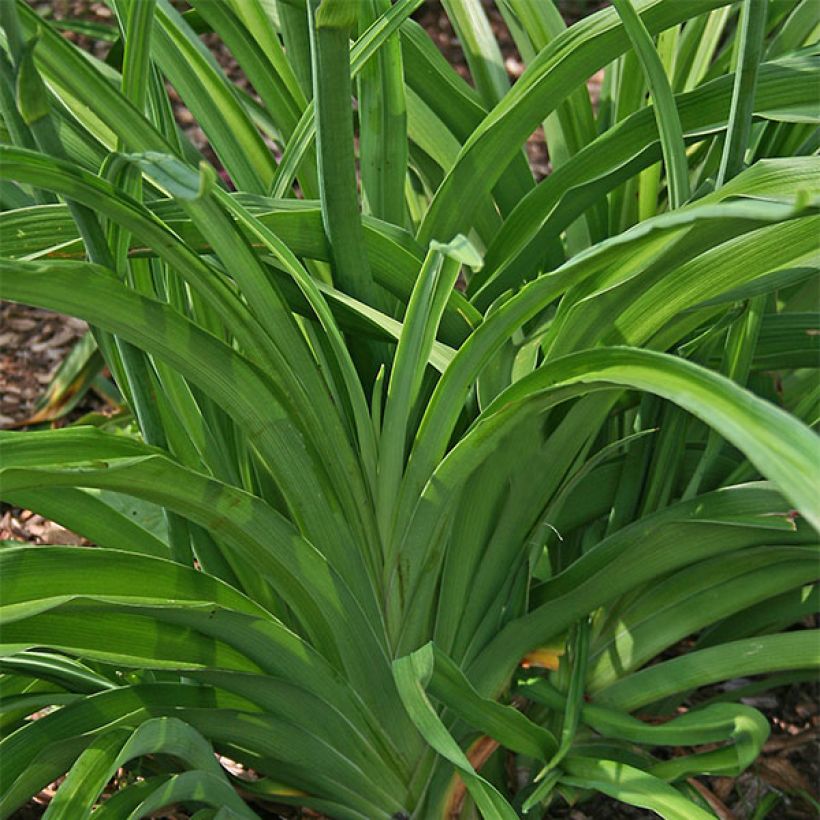

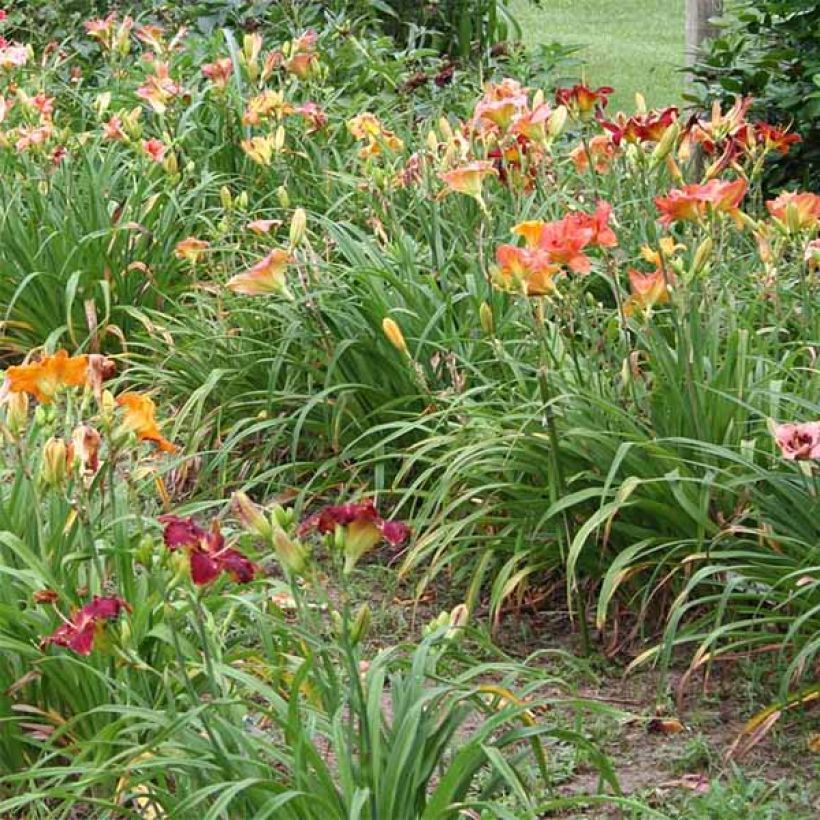

Flowering
Foliage
Plant habit
Botanical data
Hemerocallis
Red Rum
Hemerocallidaceae
Daylily
Cultivar or hybrid
Other Hemerocallis - Daylilies
Planting and care
Plant Hemerocallis 'Red Rum' in good garden soil enriched with humus and compost. Ensure the soil is not too clayey. In these conditions, your perennial will have good tolerance to summer droughts and will not suffer from winter frosts. Very easy to grow, this variety is not susceptible to parasites or diseases, and rodents are not interested in it. Daylilies thrive both in shade and in sun, with 4 to 5 hours of sunlight every day being sufficient. Plant by burying the collar 3 to 4cm (1 to 2in) below the surface. If you place multiple plants, do not put them too close together as the space will quickly be colonised. Keep the soil moist during the first two months after planting. Some daylilies can be slightly invasive, so you can divide clumps in autumn to keep them in check. Cut back faded stems to ground level.
Planting period
Intended location
Care
-
, onOrder confirmed
Reply from on Promesse de fleurs
Haven't found what you were looking for?
Hardiness is the lowest winter temperature a plant can endure without suffering serious damage or even dying. However, hardiness is affected by location (a sheltered area, such as a patio), protection (winter cover) and soil type (hardiness is improved by well-drained soil).

Photo Sharing Terms & Conditions
In order to encourage gardeners to interact and share their experiences, Promesse de fleurs offers various media enabling content to be uploaded onto its Site - in particular via the ‘Photo sharing’ module.
The User agrees to refrain from:
- Posting any content that is illegal, prejudicial, insulting, racist, inciteful to hatred, revisionist, contrary to public decency, that infringes on privacy or on the privacy rights of third parties, in particular the publicity rights of persons and goods, intellectual property rights, or the right to privacy.
- Submitting content on behalf of a third party;
- Impersonate the identity of a third party and/or publish any personal information about a third party;
In general, the User undertakes to refrain from any unethical behaviour.
All Content (in particular text, comments, files, images, photos, videos, creative works, etc.), which may be subject to property or intellectual property rights, image or other private rights, shall remain the property of the User, subject to the limited rights granted by the terms of the licence granted by Promesse de fleurs as stated below. Users are at liberty to publish or not to publish such Content on the Site, notably via the ‘Photo Sharing’ facility, and accept that this Content shall be made public and freely accessible, notably on the Internet.
Users further acknowledge, undertake to have ,and guarantee that they hold all necessary rights and permissions to publish such material on the Site, in particular with regard to the legislation in force pertaining to any privacy, property, intellectual property, image, or contractual rights, or rights of any other nature. By publishing such Content on the Site, Users acknowledge accepting full liability as publishers of the Content within the meaning of the law, and grant Promesse de fleurs, free of charge, an inclusive, worldwide licence for the said Content for the entire duration of its publication, including all reproduction, representation, up/downloading, displaying, performing, transmission, and storage rights.
Users also grant permission for their name to be linked to the Content and accept that this link may not always be made available.
By engaging in posting material, Users consent to their Content becoming automatically accessible on the Internet, in particular on other sites and/or blogs and/or web pages of the Promesse de fleurs site, including in particular social pages and the Promesse de fleurs catalogue.
Users may secure the removal of entrusted content free of charge by issuing a simple request via our contact form.
The flowering period indicated on our website applies to countries and regions located in USDA zone 8 (France, the United Kingdom, Ireland, the Netherlands, etc.)
It will vary according to where you live:
- In zones 9 to 10 (Italy, Spain, Greece, etc.), flowering will occur about 2 to 4 weeks earlier.
- In zones 6 to 7 (Germany, Poland, Slovenia, and lower mountainous regions), flowering will be delayed by 2 to 3 weeks.
- In zone 5 (Central Europe, Scandinavia), blooming will be delayed by 3 to 5 weeks.
In temperate climates, pruning of spring-flowering shrubs (forsythia, spireas, etc.) should be done just after flowering.
Pruning of summer-flowering shrubs (Indian Lilac, Perovskia, etc.) can be done in winter or spring.
In cold regions as well as with frost-sensitive plants, avoid pruning too early when severe frosts may still occur.
The planting period indicated on our website applies to countries and regions located in USDA zone 8 (France, United Kingdom, Ireland, Netherlands).
It will vary according to where you live:
- In Mediterranean zones (Marseille, Madrid, Milan, etc.), autumn and winter are the best planting periods.
- In continental zones (Strasbourg, Munich, Vienna, etc.), delay planting by 2 to 3 weeks in spring and bring it forward by 2 to 4 weeks in autumn.
- In mountainous regions (the Alps, Pyrenees, Carpathians, etc.), it is best to plant in late spring (May-June) or late summer (August-September).
The harvesting period indicated on our website applies to countries and regions in USDA zone 8 (France, England, Ireland, the Netherlands).
In colder areas (Scandinavia, Poland, Austria...) fruit and vegetable harvests are likely to be delayed by 3-4 weeks.
In warmer areas (Italy, Spain, Greece, etc.), harvesting will probably take place earlier, depending on weather conditions.
The sowing periods indicated on our website apply to countries and regions within USDA Zone 8 (France, UK, Ireland, Netherlands).
In colder areas (Scandinavia, Poland, Austria...), delay any outdoor sowing by 3-4 weeks, or sow under glass.
In warmer climes (Italy, Spain, Greece, etc.), bring outdoor sowing forward by a few weeks.



